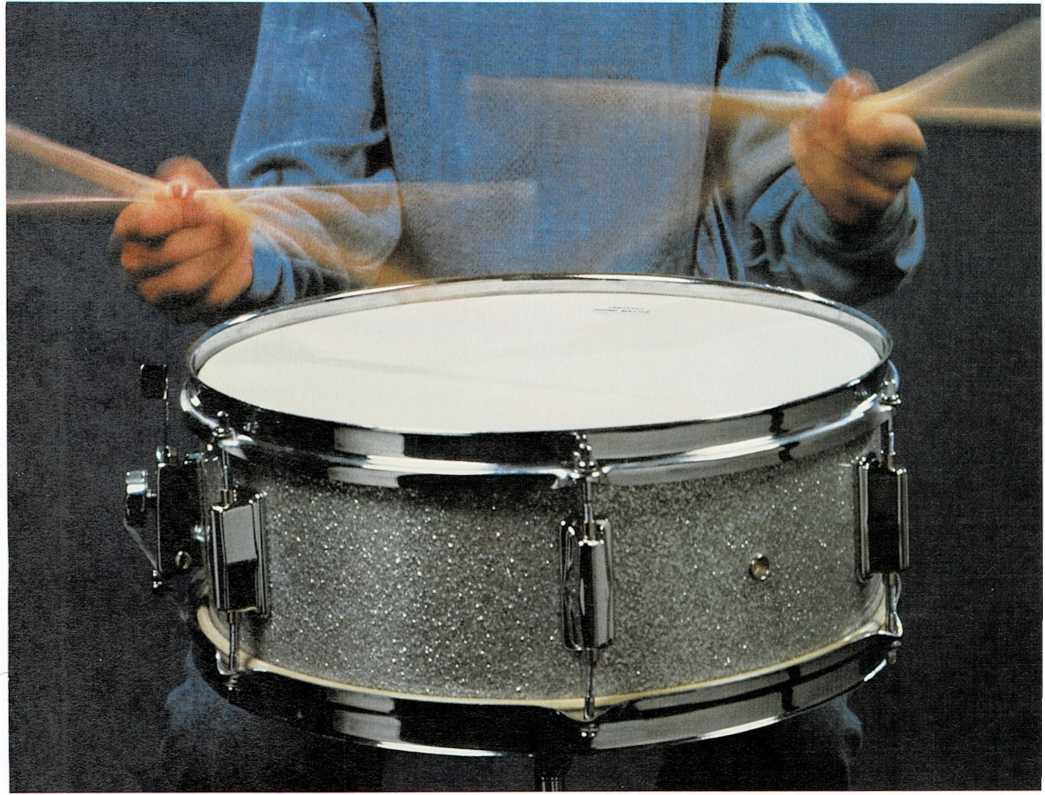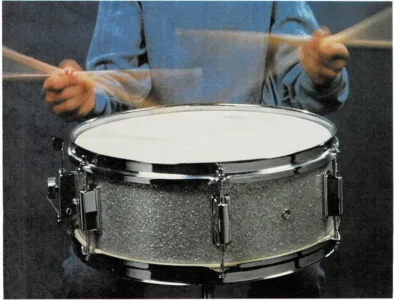Boom and bong
Tap a pencil against an empty box. It doesn’t play a tune, but it does
make a sound. One family of instruments makes sounds in the same
way—you use something to hit, or strike, them. The instruments in this
family are called percussion instruments. The word percussion means
\”striking.”
A drum is a percussion instrument. It has a thin piece of material,
called a drumhead, stretched over something hollow, like a can. When
you strike the drumhead with a stick or your hand, the stretched
material vibrates. This makes the air around the drum vibrate. It also
makes the air inside the drum vibrate. The vibrations inside the drum
bounce back and forth, somewhat like an echo. They make the sound
stronger. Instead of a light tapping, you hear a loud rat-tat-tat or
boomboom-boom.
You can’t play a tune on most drums, because they make only one kind of
sound. But kettledrums, or timpani [(tihm]{.smallcaps} puh nee), can
make several different sounds. When the drumheads are tight, they
vibrate fast and make a higher sound. When the drumheads are loose, they
make a lower sound. So the drumheads are tightened and loosened to play
a \”tune.”
A xylophone [(zy]{.smallcaps} luh fohn), a glockenspiel
[(glahk]{.smallcaps} uhn speel), and a marimba (muh [rihm]{.smallcaps}

A drum has a tightly stretched covering called a drumhead. When you
beat the drum, the drumhead vibrates and makes the sound you hear.
buh) are other percussion instruments that can be used to play tunes.
Each one has bars of different lengths that make different sounds when
you hit them. The short bars vibrate faster and make higher sounds than
the long bars.
Cymbals (SIHM buhlz) are percussion instruments, too. They make a loud,
clashing sound when you hit them together.

